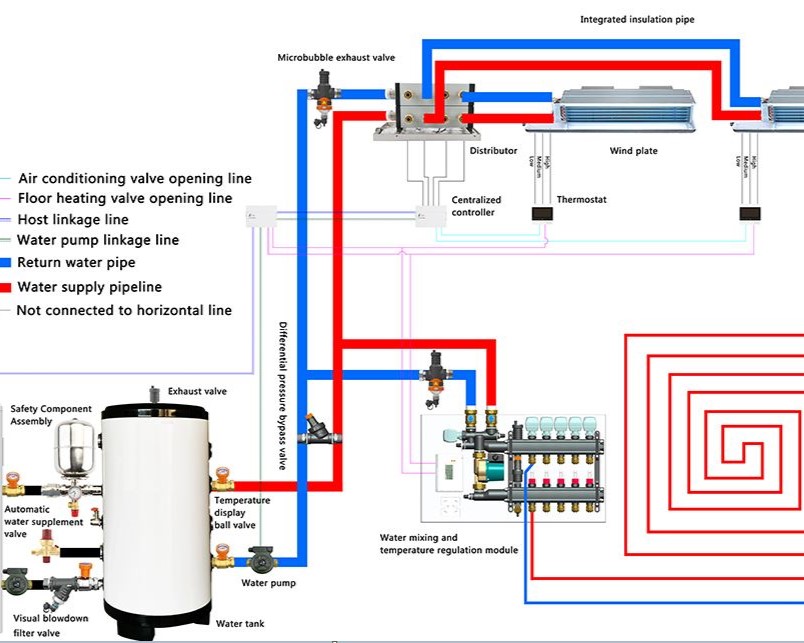HVAC is an air conditioner with heating, ventilation and air conditioning. Since the main functions of HVAC include: heating, ventilation and air conditioning, the abbreviation HVAC (Heating, Ventilating and Air Conditioning), the comprehensive abbreviation of these three functions, namely HVAC.
In modern buildings, these functions (including their control systems and system design and installation) are integrated into one or more HVAC systems. For small buildings, the contractor will select the HVAC system and equipment directly according to the needs. In the case of large-scale buildings, the architects and engineers, mechanical and structural engineers will analyze, design and select the HVAC system, which will be installed by professional mechanical contractors.
The most fundamental goal of HVAC systems is to achieve environmental temperature control to meet environmental comfort and some process requirements.
In the early HVAC system, a constant-flow hydraulic system was generally used to adjust the ambient temperature of the target area by controlling the air volume of the end equipment. For example, a three-speed switch was used to adjust the fan coil air volume and pass The variable air volume air conditioner performs air volume adjustment and the like. This adjustment is simple, coarse and decentralized, and there is no need to adjust the hydraulic system after the initial commissioning of the system.
As people’s demands for environmental comfort and awareness of energy conservation continue to increase, this adjustment is no longer sufficient. Therefore, people began to use variable flow hydraulic system and variable air volume system, through the electric control valve or damper actuator to continuously adjust the water volume or air volume of the system to achieve precise control of the ambient temperature.
The electric control valve can be connected to various sensors, transmitters and controllers to form a decentralized control system, or it can be connected with the building control system to form a central control system with decentralized control and centralized management, thus greatly improving The ability of the system to regulate the ambient temperature.
But in some variable flow systems with large fluctuations in system load, since multiple electric regulating valves work at the same time, the change of working state of any one electric regulating valve will affect other electric regulating valves, and the electric regulating valve The anti-interference ability of the system itself is relatively poor, which causes the whole system to be unstable, the ability to regulate the ambient temperature is lowered, and the adjustment precision is lowered.
Therefore, in some large-scale variable-flow central air-conditioning water systems, a new type of regulating valve with strong anti-interference ability-dynamic balancing electric valve has been widely used.
At the same time, a new fully balanced hydraulic system is also being adopted by more and more large variable flow water systems due to its efficiency, stability and energy efficiency.
In the HVAC control for hot water and cold air, the valves used are electric two-way valve, electric three-way valve, copper solenoid valve, electric control valve, pneumatic flange ball valve, pneumatic thread ball valve, soft sealing butterfly valve, filtration , elastic seat sealing gate valve, electric flange ball valve, electric thread ball valve, electric three-way ball valve, etc.

